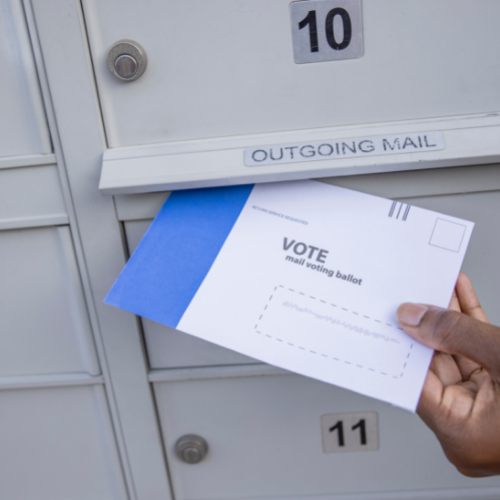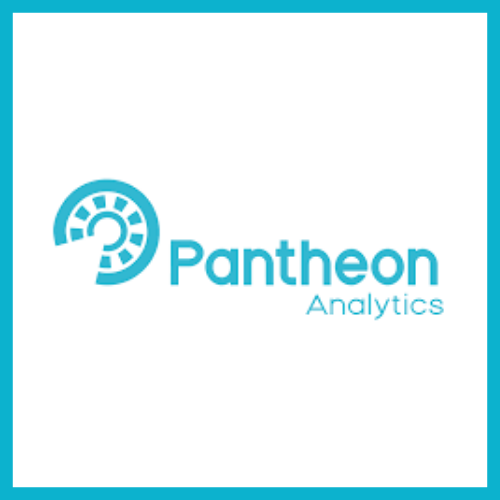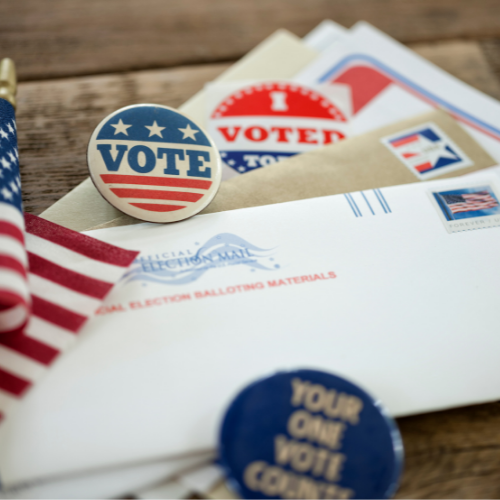From the authors: “In response to COVID-19, many scholars and policymakers are urging the United States to expand voting-by-mail programs to safeguard the electoral process, but there are concerns that such a policy could favor one party over the other. We estimate the effects of universal vote-by-mail, a policy under which every voter is mailed a ballot in advance of the election, on partisan election outcomes. We find that universal vote-by-mail does not affect either party’s share of turnout or either party’s vote share. These conclusions support the conventional wisdom of election administration experts and contradict many popular claims in the media. Our results imply that the partisan outcomes of vote-by-mail elections closely resemble in-person elections, at least in normal times.”
All-Mail Voting in Colorado Increases Turnout and Reduces Turnout Inequality
The COVID-19 crisis has sparked interest in all-mail voting as a potential policy solution for avoiding in-person elections. However, past research into the effect of all-mail voting on voter turnout has found mixed results. We exploit the implementation of all-mail voting in Colorado, where statewide policy implementation was effective but turnout has been understudied, to estimate the effect of all-mail voting on turnout for all registered voters, along with age, racial, education, income, and occupational subgroups. Using large voter file data and a difference-in-differences design within individuals, we find an overall turnout effect of approximately 9.4 percentage points. Turnout effects are significantly larger among lower-propensity voting groups, such as young people, blue-collar workers, voters with less educational attainment, and voters of color. The results suggest that researchers and policymakers should look to Colorado’s all-mail voting approach as an effective model for boosting aggregate turnout and reducing disparities across subgroups.
Local Option Leads to Broader Adoption
Over the last year or so, we have seen municipalities and counties across the country start to use Vote at Home (VAH) modeled elections, with sensational results.
Disability and Voter Turnout in the 2018 Elections
Rutger’s University analysis of disability turnout finds four and five star Vote at Home states, like Colorado and Arizona, consistently outperform others in reducing the disability voting gap.
Mail Voting and Minority Turnout: Evidence from Ohio
This report presents evidence that greater access to mail ballots is associated with greater county-level voter turnout, including in counties with larger Black and Hispanic populations.
Electorate Study: How Did the Voter’s Choice Act Affect Turnout in 2018?
Research Questions: “In its first year of implementation, did the Voter’s Choice Act (VCA) change turnout patterns in the counties – Madera, Napa, Nevada, Sacramento, and San Mateo – that adopted this new reform? How did this reform affect the turnout of groups of Californians – young voters, Latinos, and Asian Americans– who have often participated in elections at lower rates than others? We address these questions by gathering data on turnout rates, voter demographics, and electoral competition from 2002 through the primary and general elections of 2018, comparing trends in the adopting counties to the rest of the state.”
The Turnout Effects of All-Mail Election Systems in Up-ballot and Down-ballot Races in Utah
This research finds that, in addition to higher overall turnout, down-ballot turnout was higher in Vote At Home optional precincts than in polling place only precincts, even after controlling for other differences. Overall, this research indicates that Vote At Home is a boon to civic participation at all levels of the ballot when measuring by the important metric of raw vote totals.
2018 Primary Election Turnout
This graph displays turnout by state in the 2018 primaries, in map form. Data from the Bipartisan Policy Center
Center for American Progress: Increasing Voter Participation in America
This report on methods to increase voter participation cites universal vote by mail, no-excuse mail voting, and vote centers as solutions.
How Electoral Institutions Affect Political Accountability
This research finds that expansion of vote at home systems increases turnout and reduces ballot roll-off.
Abstract: “A central question in the study of democratic governance concerns the conditions under which voters make informed choices at the ballot box. I exploit the staggered implementation of an electoral reform in a U.S. state to study the effects of electoral institutions on voter information and political accountability. I find that [vote at home] elections cause an increase in turnout in municipal elections and a decrease in ballot roll-off on statewide ballot measures in presidential election years in some counties, which is largely consistent with my argument that voters gather more information about politics when voting by mail. Further, there is strong evidence that vote-by-mail results in a decrease in taxing and spending in municipalities. The institution has less conclusive effects on municipal accountability audit outcomes. Using data from the Catalist voter file I show that these results cannot be explained by changes in the composition of the electorate caused by vote-by-mail.”










